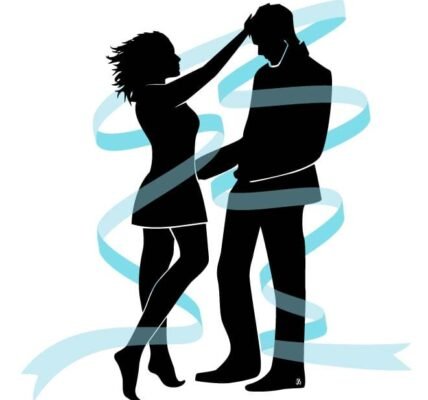What is Bipolar Disorder?

Bipolar Disorder is like a roller coaster of emotions that some people experience. Imagine you’re at an amusement park, but it’s all happening inside your head. This disorder makes people go through two extreme types of emotions: mania and depression. Do you want to learn more? Let’s explore it!
To understand Bipolar Disorder, think of it as a journey on an unpredictable roller coaster, not in an amusement park, but within the complex realm of human emotions. It’s a mental health condition characterized by significant mood swings, including emotional highs (mania or hypomania) and lows (depression).
When you’re in the mania phase of Bipolar Disorder, it’s like being on the highest point of a roller coaster, feeling on top of the world. During this phase, you might feel unusually energetic, happy, or irritable. Some people feel like they can do anything, make grand plans, and engage in risky behaviors. This high is not just a fleeting moment of joy; it’s an intense and sustained period of overactivity and heightened mood.
In contrast, the depressive phase of Bipolar Disorder is the polar opposite. It’s like being in the deep, dark valley of the roller coaster. During these times, people often feel very sad, hopeless, and lose interest in most daily activities. They might struggle with sleep, experience changes in appetite, and feel a lack of energy. Some might even have thoughts of self-harm or suicide. It’s a profound emotional low that impacts their ability to function.
The switch from mania to depression, and vice versa, can happen abruptly, making life feel unpredictable and challenging. The intensity of these mood swings can vary from person to person. Some may experience more frequent and severe episodes, while others might have milder symptoms.
Diagnosing Bipolar Disorder involves careful observation and evaluation by mental health professionals. It’s not something that can be detected through a simple test. Psychiatrists and psychologists often conduct thorough assessments, including psychiatric interviews, mood charting, and sometimes, physical examinations to rule out other causes of mood changes.

Living with Bipolar Disorder can be challenging, but it’s important to remember that it’s a manageable condition. Treatment typically includes a combination of medication and psychotherapy. Medications like mood stabilizers, antipsychotics, and antidepressants can help regulate mood swings. Psychotherapy, such as cognitive-behavioral therapy (CBT), can provide strategies to manage symptoms and cope with stressors.
Support from family and friends is crucial for individuals with Bipolar Disorder. Understanding, patience, and empathy can make a significant difference in their journey. Encouraging them to stick with treatment, helping them monitor their mood and behavior changes, and providing a supportive environment can be immensely beneficial.
Self-care plays a vital role in managing Bipolar Disorder. Regular exercise, a healthy diet, adequate sleep, and avoiding alcohol and drugs can help stabilize mood swings. It’s also important to recognize the warning signs of mood changes and have a plan to address them.
Understanding the Cycles of Mania and Depression
Mania: Full Throttle!

Mania is like being on an emotional roller coaster that goes super fast. People with Bipolar Disorder feel full of energy, happy, and excited. Sometimes, they might do crazy things without thinking too much. They can talk and move really quickly without getting tired. But remember, it’s not always a party. Sometimes, they can get a bit irritable or angry.
Imagine yourself on a roller coaster, climbing rapidly to the top. This ascent represents the onset of mania for someone with Bipolar Disorder. During this phase, individuals often feel an overwhelming surge of energy. They might feel unstoppable, like they can achieve anything they set their mind to. This excessive energy often leads to a decreased need for sleep. A person in a manic phase might stay up for days, working on projects, talking incessantly, or engaging in multiple activities at once.
In the mania phase, thoughts race at incredible speeds. These racing thoughts can lead to rapid speech, where individuals speak quickly, often jumping from one idea to another. It’s challenging for them to slow down their thoughts or their speech. This can make conversations with others difficult, as they might struggle to keep up with the quick pace of the manic individual’s thoughts and words.
Another characteristic of mania is the development of grandiose ideas. Individuals might believe they have special powers, talents, or abilities. They may embark on unrealistic, ambitious projects or take on excessive risks without considering the potential consequences. This overconfidence can lead to impulsive decisions, like spending large sums of money, making rash business decisions, or engaging in risky behaviors.
However, mania isn’t always experienced as euphoria. For some, it manifests as irritability and agitation. This can lead to conflicts in relationships, as the individual may become easily frustrated or angered by others. They might have a lower tolerance for what they perceive as challenges or opposition, and this can lead to arguments or confrontations.

Mania can also disrupt day-to-day functioning. The inability to focus on tasks, combined with the constant influx of new ideas and plans, can make it hard for individuals to complete projects or follow through with responsibilities. This can impact their work, school, or personal life, leading to difficulties in maintaining a stable routine.
It’s important to note that mania affects everyone differently. Some people might experience all of these symptoms, while others may only have a few. The intensity of these symptoms can also vary from mild to severe. In more extreme cases, mania can even lead to a break from reality, where individuals lose touch with what’s real and what’s not. This can manifest as hallucinations or delusions and typically requires immediate medical attention.
Understanding mania is crucial for those with Bipolar Disorder and their loved ones. Recognizing the signs of a manic episode can help in managing the condition more effectively. Early intervention can prevent the escalation of symptoms and help maintain a sense of balance
in the individual’s life. It’s essential for people with Bipolar Disorder to have a strong support system and access to mental health professionals who can provide guidance and treatment.

Treatment for mania often involves a combination of medication and psychotherapy. Mood stabilizers and antipsychotic medications are commonly used to control the symptoms of mania. Psychotherapy, such as cognitive-behavioral therapy, can help individuals develop coping strategies to manage their symptoms and prevent future episodes.
It’s also important for individuals with Bipolar Disorder to monitor their lifestyle and daily habits. Regular sleep patterns, a healthy diet, and avoiding substances like alcohol and drugs can play a significant role in managing manic episodes. Stress management techniques, such as mindfulness and relaxation exercises, can also be beneficial.
Education about the condition is another critical component of managing Bipolar Disorder. Understanding the nature of the disorder, recognizing the early signs of mania, and knowing when to seek help can empower individuals to take control of their condition. Support groups and educational programs can provide valuable information and connect individuals with others who share similar experiences.
For friends and family members, understanding the signs of mania is vital. They can play a crucial role in recognizing when a loved one is entering a manic phase and help them get the necessary support. Encouragement to adhere to treatment plans and a non-judgmental, supportive attitude can make a significant difference in the individual’s journey towards managing their Bipolar Disorder.
Depression: The Sad Valley

Depression is the complete opposite of mania in Bipolar Disorder. It’s akin to the emotional roller coaster plummeting to its lowest point, where the exhilaration turns into a profound stillness. People with Bipolar Disorder, during this phase, experience a profound sense of sadness, fatigue, and a lack of motivation. The vibrancy of mania fades into a world that may feel grey and lifeless.
During a depressive episode, individuals often feel a deep sense of sadness or hopelessness. This isn’t just feeling blue or having a bad day; it’s an intense and persistent emotion that can feel overwhelming. Activities and hobbies that once brought joy and excitement may no longer hold any appeal. This loss of interest can lead to a withdrawal from social activities and a tendency to isolate oneself.
Fatigue is another hallmark of this phase. People may feel constantly tired, regardless of how much they sleep. Getting out of bed can feel like a monumental task, and everyday activities can seem exhausting. This lack of energy contributes to the difficulty in maintaining day-to-day responsibilities, whether it’s work, school, or personal care.
Sleep disturbances are common during depressive episodes. Some individuals may find themselves sleeping excessively, a condition known as hypersomnia, while others may struggle with insomnia, finding it difficult to fall asleep or stay asleep. These sleep issues can exacerbate the feelings of sadness and fatigue, creating a challenging cycle to break.
Changes in appetite and weight are also frequently observed. Some may experience a significant decrease in appetite, leading to weight loss, while others may find comfort in eating and gain weight. These physical changes can have a substantial impact on an individual’s self-esteem and overall physical health.
In more severe cases, individuals with Bipolar Disorder may have thoughts of self-harm or suicide. These thoughts are a sign of the significant distress and hopelessness that can accompany a depressive episode. It’s crucial to take these signs seriously and seek immediate professional help.

Depression in Bipolar Disorder is not just about feeling sad; it’s about experiencing a profound disconnection from the world. The usual pleasures and motivations of life seem distant, and the world can feel unbearably heavy. The contrast between this state and the highs of mania can be stark and disorienting.
Diagnosing and treating depression in Bipolar Disorder involves a comprehensive approach. Mental health professionals may use a combination of medication, such as antidepressants or mood stabilizers, and psychotherapy to treat depressive episodes. Cognitive-behavioral therapy (CBT), for example, can help individuals challenge negative thought patterns and develop healthier coping strategies.
Support from family and friends is vital during these times. Understanding, empathy, and patience can make a significant difference in helping someone navigate through a depressive episode. Offering a listening ear, providing encouragement to stick with treatment, and simply being present can be powerful forms of support.
Self-care practices, including regular exercise, a balanced diet, adequate sleep, and stress-reduction techniques, play an essential role in managing depression. These practices can help stabilize mood, improve energy levels, and enhance overall well-being.
In summary, depression in Bipolar Disorder is a challenging and often debilitating experience. However, with proper treatment, support, and self-management strategies, individuals can navigate through these low points and regain a sense of balance and hope. It’s important to remember that, like all aspects of Bipolar Disorder, depression is manageable, and individuals can lead a fulfilling life despite these challenges.
How is Bipolar Disorder Diagnosed?
Let’s Talk about Detectives!

Doctors, akin to detectives of the mind, play a crucial role in diagnosing Bipolar Disorder. They meticulously observe and analyze your emotional patterns, akin to piecing together clues in a mystery. Through detailed conversations, they delve into the depths of your feelings and experiences. They may even ask you to maintain a diary, chronicling your daily emotional landscape. This diary acts as a valuable tool, providing insights into the potential cycles of mania and depression that characterize Bipolar Disorder. Through this investigative process, doctors can unravel the complexities of your emotions, aiding in the accurate diagnosis and effective management of the condition.
Treatment for Bipolar Disorder
To help people with Bipolar Disorder, doctors have some special tools:
- Medications: Sometimes, doctors prescribe medications to help balance emotions. These medications can help control mania and depression.
- Therapy: Therapy is like talking to a friend who knows a lot about emotions. A therapist can help you understand your feelings and teach you how to manage them.
- Family and Friends Support: The people around you can be a big help too. They can offer you support and understanding when you need it the most.
- Self-Care: Taking care of yourself is also important. Eating healthy, exercising, and getting enough sleep can help you stay balanced.




